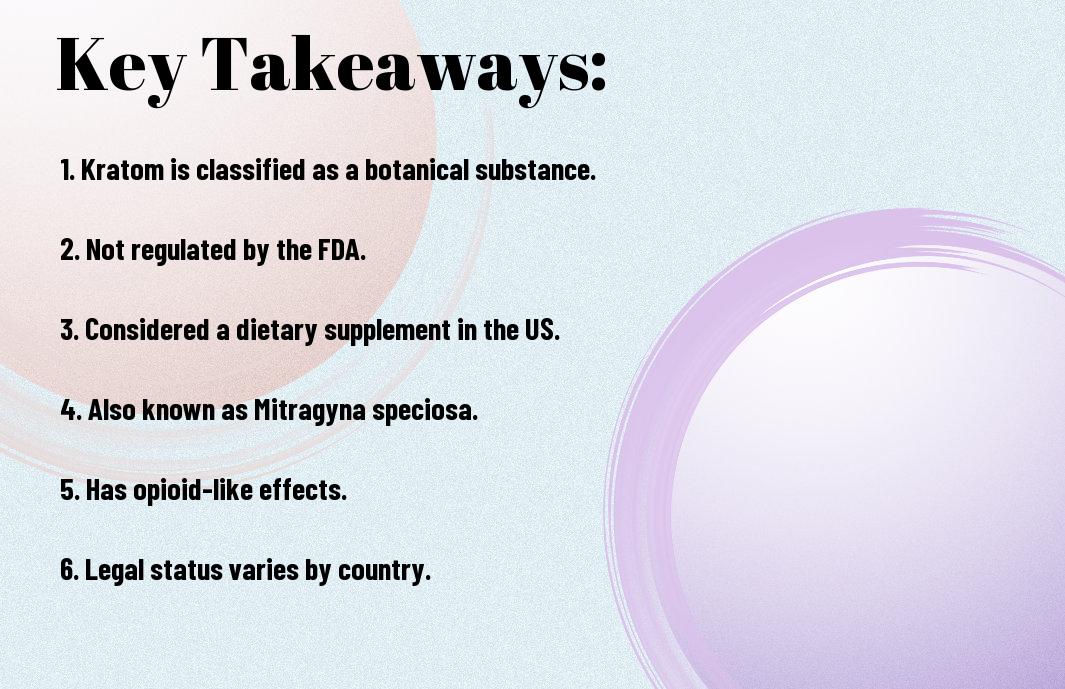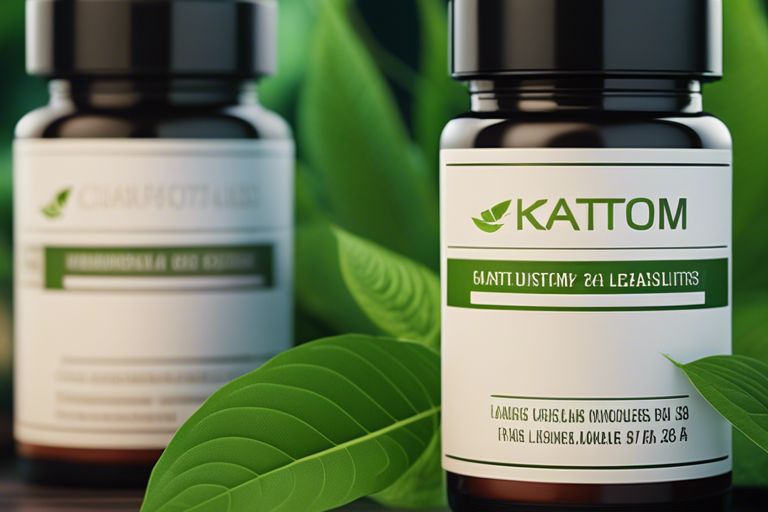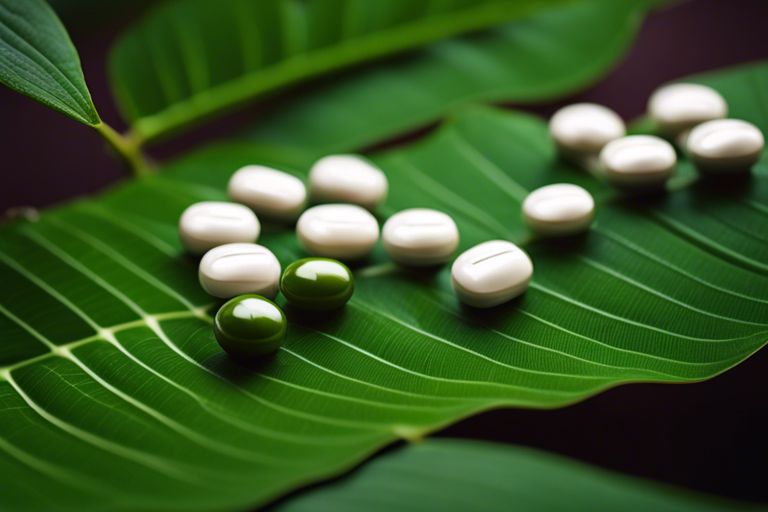You may have heard about Kratom, but do you know what it is classified as? In this informative post, we will explore into the classification of Kratom, highlighting its controversial status as an herbal supplement, its legal implications, and its potential benefits and risks. Stay informed about this natural substance and its complex classification.
Key Takeaways:
- Kratom is classified as a botanical substance: Despite its popularity in the alternative medicine community, kratom is not classified as a pharmaceutical drug. It is considered a natural botanical substance.
- Kratom is often categorized as a dietary supplement: Similar to vitamins and minerals, kratom is sometimes classified as a dietary supplement because of the way it is marketed and used by consumers for its potential health benefits.
- Kratom is not approved by the FDA: While some people view kratom as a natural remedy, it is important to note that the Food and Drug Administration (FDA) has not approved kratom for any medical use, and it is not regulated in the same way as pharmaceutical drugs.

Legal Classification
Your Kratom: Unsafe and ineffective may be a subject of concern in the eyes of authorities when it comes to its legal classification. Kratom falls into a gray area in terms of legality in the United States. The Controlled Substances Act (CSA) does not currently classify Kratom as a Schedule I drug, which would indicate it has a high potential for abuse and no accepted medical use. Instead, it is often sold as a dietary supplement in the form of powder, capsules, or extracts.
Schedule I vs. Schedule II
Legal experts and authorities are grappling with the question of whether Kratom should be classified as a Schedule I or Schedule II substance. A Schedule I classification would indicate that Kratom is considered highly dangerous and addictive with no medical benefits. Conversely, a Schedule II classification would suggest that it has recognized medical uses but still carries a high potential for abuse. This ongoing debate leaves Kratom in a regulatory limbo, creating confusion about its legal status and oversight.
DEA’s Stance on Kratom
Any discussion regarding the legal classification of Kratom must consider the Drug Enforcement Administration’s (DEA) stance on the substance. The DEA has expressed concerns about Kratom’s potential for abuse and addiction. In 2016, the DEA attempted to classify Kratom as a Schedule I substance due to reported deaths associated with its use and the lack of substantial research on its safety and efficacy. However, due to public backlash and advocacy efforts, the DEA withdrew its intent to emergency schedule Kratom, signaling the need for further research and evaluation.
Kratom remains a controversial substance due to its potential risks for abuse and addiction as highlighted by the DEA. However, proponents argue that it has possible therapeutic properties and could offer alternative treatment options for various ailments. The ongoing debate surrounding Kratom’s legal classification reflects the complexity of regulating substances with potential benefits and risks.
Botanical Classification
Some may wonder about the botanical classification of kratom, a plant that has gained popularity in natural remedies. Understanding its scientific name and the family it belongs to can provide insights into its botanical features.
Kratom’s Scientific Name
Classification: Kratom’s scientific name is Mitragyna speciosa. The genus name, Mitragyna, is derived from the Greek words “mitra,” which means crown, and “gyno,” which means seed, referring to the flowers that appear like a crown of seeds on the plant. The species name, speciosa, means beautiful, a nod to the plant’s attractive foliage.
Mitragyna Speciosa Family
Mitragyna: It belongs to the Rubiaceae family, which includes coffee and gardenia plants. This family is known for its diverse range of plants, with many possessing medicinal properties. The Rubiaceae family is characterized by its four-lobed reproductive structure and the presence of alkaloids in many of its members.
It is necessary to note that within the Rubiaceae family, kratom stands out for its unique alkaloid composition, which includes mitragynine and 7-hydroxymitragynine. These compounds are responsible for Kratom’s effects and make it a controversial botanical specimen. By studying its botanical classification, scientists can better understand Kratom’s biological characteristics and its potential for medicinal use.
Chemical Composition
Alkaloids and Their Effects
After examining the chemical composition of kratom, it is evident that it contains over 40 different alkaloids, with mitragynine and 7-hydroxymitragynine being the most prominent. These alkaloids are responsible for the unique effects kratom produces on the body. The alkaloids in kratom interact with opioid receptors in the brain, leading to various outcomes ranging from pain relief to sedation.
Opioid-Like Compounds
Composition reveals that, although kratom’s alkaloids act on opioid receptors, kratom itself is not classified as an opioid. This distinction is crucial in understanding how kratom affects the body and why it is not as potent or addictive as traditional opioids. However, kratom’s opioid-like properties have raised concerns among health professionals and regulatory bodies.
Understanding the chemical composition of kratom is crucial in comprehending its effects and potential risks. While kratom’s alkaloids can provide pain relief and mood enhancement, they can also lead to dependence and withdrawal symptoms with prolonged use. It is important for individuals considering kratom use to be aware of these factors and use the substance responsibly.
Pharmacological Classification
Many researchers classify kratom as having mixed pharmacological effects, making it difficult to pinpoint its exact classification. However, some of its primary pharmacological actions can be identified.
Opioid Receptor Interaction
An necessary aspect of kratom’s effects is its interaction with opioid receptors in the brain. This interaction can lead to pain relief, euphoria, and sedation, similar to traditional opioids. However, kratom’s effects are milder and have a lower risk of respiratory depression compared to potent opioids like morphine.
Stimulant-Like Properties
One of the unique aspects of kratom is its stimulant-like properties at lower doses. This can result in increased energy, alertness, and sociability, making it popular among individuals looking for a natural energy boost.
An important point to note is that kratom’s stimulant effects can transition into sedation at higher doses, highlighting its complex pharmacological nature.
This intricate interaction between kratom and the body’s receptors contributes to the plant’s diverse effects, making it a subject of interest for researchers studying its pharmacological classification.
International Classification
Kratom’s Legal Status Worldwide
With the growing popularity of kratom, its legal status around the world varies significantly. While some countries have opted to regulate or decriminalize the use of kratom, others have imposed strict bans. In the United States, kratom is legal at the federal level but is banned in several states.
Countries Where Kratom is Banned
For those residing in countries where kratom is banned, obtaining or using this botanical substance can lead to severe legal consequences. Countries like Australia, Thailand, and Malaysia have strict regulations against kratom due to its potential for abuse and addictive properties.
Status: It is crucial for individuals to research and understand the legal status of kratom in their respective countries before considering its use. While some countries have embraced kratom for its potential medicinal benefits, others have deemed it a dangerous substance that poses risks to public health. It is crucial to stay informed and aware of the ever-evolving legal landscape surrounding kratom.

Medical Classification
Despite Kratom: A Legal Drug That’s Dangerously Addictive being legal in many places, its classification and regulation remain a topic of debate within the medical community. Some experts argue that kratom can be a potential treatment for opioid addiction, while others warn about its potential risks and addictive nature.
Kratom as a Treatment for Opioid Addiction
Opioid addiction is a serious issue affecting millions of people worldwide. Some advocates suggest that kratom could offer a safer alternative for managing opioid withdrawal symptoms and cravings. However, studies have shown that kratom may have addictive properties of its own, leading to concerns about its use as a treatment for addiction.
Potential Therapeutic Uses
Uses of kratom in traditional medicine have included pain relief, energy enhancement, and mood elevation. Proponents of kratom believe that its active compounds could have potential therapeutic uses beyond addiction treatment, such as managing chronic pain and improving overall well-being.
Kratom has gained popularity in recent years for its alleged benefits, but more research is needed to fully understand its effects and risks. As debates continue on how to classify and regulate this unique plant, it is imperative to consider both its potential medical uses and the potential for abuse.
Is Kratom Classified as a Performance-Enhancing Substance for Athletes?
Some athletes believe that kratom for athletic performance can boost their endurance and reduce pain during training. However, the FDA has issued warnings about the potential risks and side effects of using kratom, and it is not currently classified as a performance-enhancing substance for athletes.
Conclusion
Conclusively, Kratom is classified as a botanical substance that is derived from the leaves of the Mitragyna speciosa tree. It is not categorized as a controlled substance at the federal level in the United States, but its legality can vary by state and country. Understanding the classification of Kratom can help individuals make informed decisions about its use and potential risks.
By delving into the classification of Kratom, we can better grasp its legal status and cultural significance. This botanical substance continues to spark debate and interest among researchers, policymakers, and the general public. As we continue to learn more about Kratom and its effects, it is crucial to stay informed and approach its usage with caution and responsibility.
FAQ
Q: What is Kratom?
A: Kratom is a tropical tree native to Southeast Asia, known scientifically as Mitragyna speciosa. The leaves of the Kratom tree have been used for centuries for their medicinal properties.
Q: How is Kratom Classified?
A: Despite its traditional medicinal uses, Kratom is classified as a schedule I controlled substance in some countries, including the United States. This means it is considered to have a high potential for abuse and no accepted medical use.
Q: Why is Kratom Classified as a Controlled Substance?
A: The classification of Kratom as a controlled substance is due to its psychoactive effects and the potential for abuse. While some people use Kratom for pain relief or to manage opioid withdrawal symptoms, it can also lead to dependence and adverse effects.
Q: Are There Any Legal Uses for Kratom?
A: In countries where Kratom is not banned, it may be legally available for research purposes or as a natural supplement. However, the legality of Kratom can vary widely depending on the region.
Q: What Are the Potential Risks of Kratom Use?
A: Some of the potential risks associated with Kratom use include addiction, dependency, and adverse effects such as nausea, constipation, and insomnia. It is important to be cautious and informed when considering using Kratom for any purpose.










